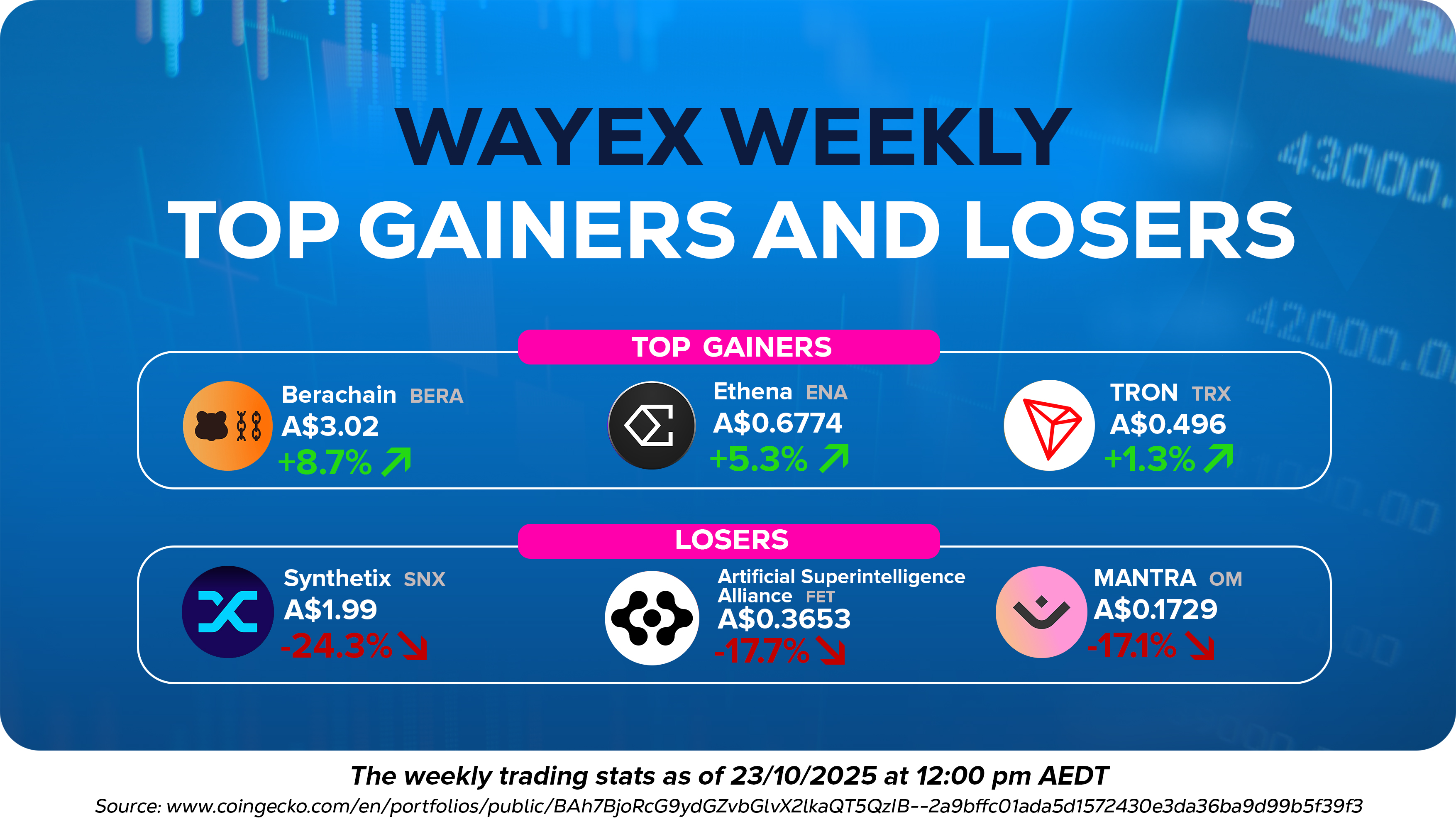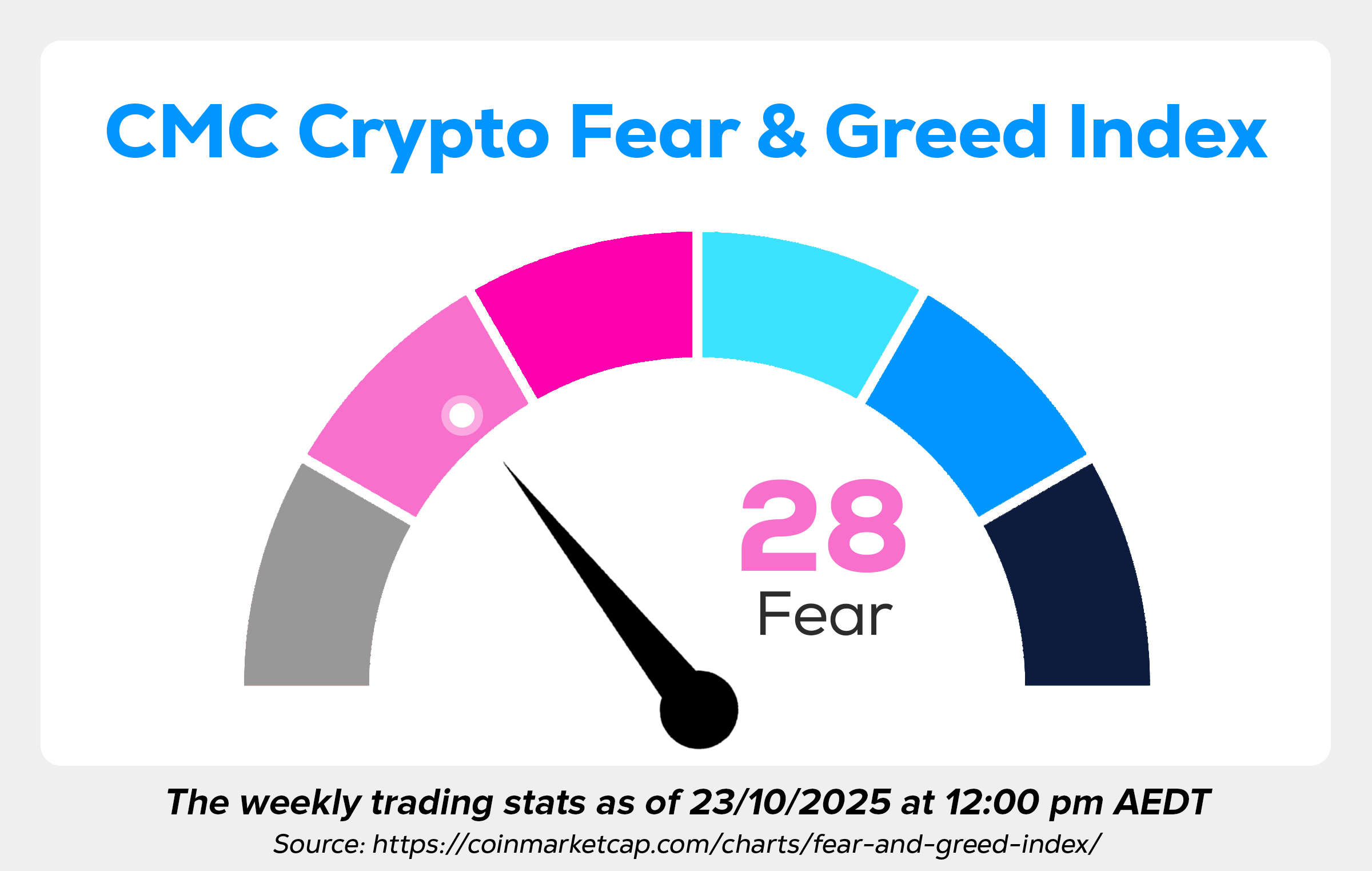This week in crypto has been marked by significant shifts and mixed signals across the market. Bitcoin’s rally has slowed as mid-term and long-term investors take profits, testing whether prices can stay above key support levels. Ethereum is facing internal drama, with top developers leaving and raising questions about leadership and pay. Kadena’s sudden shutdown has reminded investors that strong technology isn’t always enough to survive in a competitive market. A major AWS outage exposed how much the “decentralised” crypto ecosystem still depends on centralised infrastructure. Meanwhile, Beijing’s regulators halted Ant Group and JD.com’s stablecoin plans in Hong Kong, signalling tighter control over digital currencies. Amid all this, Tether hit a milestone of 500 million users and continued expanding into emerging markets. As Uptober’s optimism cools, the week highlights how innovation, regulation, and investor sentiment continue to shape crypto’s next chapter.
Bitcoin Meets The Resistance
Bitcoin’s recent pullback isn’t being driven by outside manipulation or trading tricks, but it’s coming from within the market itself. CoinDesk reports that many holders who bought during late 2024 and early 2025 are now selling to take profits after Bitcoin hit a record high above $126,000 USD ($194,237 AUD) earlier this month.
According to CoinDesk’s reporting, analysts say that almost half of this selling pressure comes from coins held between six months and a year, showing that mid-term investors are the main force behind the slowdown. At the same time, older coins are being moved again, a sign that long-term holders are also cashing in. Together, these trends reveal that Bitcoin’s current resistance is less about market interference and more about investors locking in their gains after a strong rally.
However, in crypto, as in life, what goes up must come down. Trading View cited CoinTelegraph reporting speculation that there may be some falls in BTC brought on by the mysterious “Trump” whale that has now made further market moves. Bitcoin’s price may fall toward $100,000 USD ($154,000 AUD) after breaking an important support level that traders call a “bear flag,” a pattern that often signals more downside.
The drop comes as a mysterious “insider” whale, a major Bitcoin holder known for large market moves, reportedly transferred 5,252 BTC (about $588 million USD or $906 million AUD) to big exchanges like Coinbase and Binance. Such transfers usually suggest plans to sell or bet against the market.
Overall, Bitcoin faces technical and psychological pressure as traders watch whether it can hold above $100,000 USD ($154,000 AUD), or if selling from large holders will push prices lower in the short term. In saying that, US right-wing media personality Tucker Carlson just referred to Bitcoin as created by the CIA, so let’s see what happens this week.

What’s Happening On The Wayex Platform This Week


Ethereum In The Spotlight As Compensation Is Outed
Crypto Twitter was abuzz with the defection of a core ETF developer to a rival project. The Ethereum Foundation is facing growing criticism over its culture, pay, and leadership as top developers voice frustrations and key figures leave for competitors. Former Geth lead Péter Szilágyi accused the Foundation of concentrating influence around Vitalik Buterin and underpaying core contributors, revealing he earned only $625,000 USD ($963,000 AUD) over six years despite Ethereum’s multibillion-dollar growth. His claims echo the long-standing “frugality” ethos that once helped Ethereum survive but now leaves builders feeling undervalued and unheard. The recent exit of Dankrad Feist to Tempo, a well-funded rival backed by Stripe and Paradigm, highlights how this lean culture may be pushing top talent toward better-resourced competitors.

At the same time, prominent community members such as Polygon CEO Sandeep Nailwal have expressed disillusionment, arguing that Ethereum’s inner circle sidelines key contributors. Critics say this combination of low pay, unclear recognition, and quiet centralisation threatens Ethereum’s credibility as a truly decentralised network. Users have also been making noises about the long staking queue. While Buterin has publicly praised Polygon and avoided direct confrontation, the controversy signals a turning point.
Kadena Shuts Shop
Kadena, once seen as one of crypto’s most promising blockchains, has officially shut down operations after running out of funds. Founded by former JPMorgan engineers Stuart Popejoy and William Martino, the company behind the network announced it will cease all business activity and maintenance, though the blockchain itself will remain online due to its decentralised design.

The decision followed a devastating 77% monthly crash in its native token, KDA, which now trades around 0.12 USD (0.19 AUD), down 99% from its 2021 peak of $3.10 USD ($4.21 AUD). Once valued at nearly $4 billion USD ($6 billion AUD), Kadena had promised Bitcoin-level security and high scalability through “braided chains” and even launched a $100 million USD ($147 million AUD) developer grant program in 2022. However, the project failed to gain lasting traction, with its DeFi activity collapsing.
Exchanges, including OKX and Bybit, have begun delisting KDA as investors face heavy losses and voice frustration online. Although the company is closing, the blockchain will continue to operate autonomously as miners maintain the network and remaining tokens are released through 2139. Industry leaders, including Cardano founder Charles Hoskinson, have expressed support for Kadena’s community, framing the collapse as a broader warning for the overcrowded Layer 1 market. Despite its strong technical vision, Kadena’s downfall underscores how innovation alone cannot sustain a project without user adoption, liquidity, and clear long-term value.
Uptober Fizzes Out?
Bitcoin has fallen sharply, with major altcoins also sliding, with Ethereum down 3% to $3,865 USD ($5958 AUD) and XRP dropping 4.5% to $240 USD ($370 AUD). The total cryptocurrency market capitalisation has declined 3% in the past 24 hours to $3.65 trillion USD ($5.62 trillion AUD). With just 10 days left in the month, Bitcoin is trading 5% lower for October as Uptober’s bullish reputation fades. It has failed to act as a store of value like Gold, which is up 10% this month, and has also decoupled from risk assets such as the Nasdaq, which is up 1.4% for October. The BTC Nasdaq correlation has weakened significantly, with the coefficient dropping to 0.20 after turning negative in late September.
This divergence comes even as broader market sentiment has improved due to easing U.S. China trade tensions and shifts in Japanese politics. Meanwhile, the U.S. government shutdown has entered its third week, though White House economic advisor Kevin Hassett said it may end soon. Institutional demand for Bitcoin has also slowed, with BTC ETFs seeing $40 million USD ($62 million AUD) in outflows on Monday, extending a four-day streak and following $1.2 billion USD ($1.8 billion AUD) in outflows last week, the second-largest weekly drop since launch. Despite this pullback, ETFs still show net inflows for October, and a Coinbase survey found that 67% of institutional investors remain optimistic about Bitcoin’s long-term outlook through 2026. However, in the short term, the market mood has turned cautious amid rising volatility and mixed economic signals.
AWS Outage Impacts Crypto
A major outage at Amazon Web Services (AWS) temporarily disrupted large parts of the internet, exposing how much of the crypto industry still depends on centralised infrastructure. Leaving crypto asking itself, can you really be decentralised if you run entirely on AWS? The failure, caused by a DNS issue in AWS’s US-EAST-1 region, affected more than 50 platforms, including Robinhood, and Ethereum layer-2 networks such as Base, Polygon, Optimism, and Arbitrum and ironically Coinbase (dubbed by Blockworks the Amazon of Crypto).
The impact was across the board, with even backend providers like Infura, which connect wallets such as MetaMask to blockchains, experiencing downtime. The issue hit U.S. East Coast users hardest, leaving Coinbase partially offline for hours and preventing customers from trading or transferring funds. MetaMask users panicked after their wallet balances appeared as zero when Infura went down across multiple networks, while OpenSea suffered intermittent outages due to dependencies on affected third-party services. Base, Coinbase’s own layer-2 network, also reported reduced capacity and delayed transactions. Analysts noted that around 37% of Ethereum nodes run on AWS, meaning a single technical issue can ripple across the entire ecosystem. While the outage didn’t halt Ethereum completely, it highlighted the irony of “decentralised” systems relying so heavily on one cloud provider. The event reignited debate about the need for decentralised cloud computing alternatives like Filecoin and Arweave, which aim to distribute data storage and processing more evenly across independent participants. Interestingly, the outage also led to a sharp, temporary drop in Ethereum gas fees to below 0.1 gwei, their lowest level in months.
Chinese Tech Giants Pauses Stablecoin Plans
Chinese tech giants Ant Group and JD.com have suspended their plans to launch stablecoins in Hong Kong after mainland regulators, including the People’s Bank of China and the Cyberspace Administration of China, ordered them to halt. The move highlights Beijing’s continued control over digital currency activity, even as Hong Kong establishes its own licensing framework for fiat-backed stablecoins. Officials in China reportedly fear that privately issued tokens could undermine state authority over monetary policy and payments. While Hong Kong’s new Stablecoin Bill aims to position the city as a regulated hub for digital assets, the intervention underscores how mainland influence may limit Chinese companies’ participation in the city’s growing crypto ecosystem. This is a big hit for Hong Kong as it is racing to become the stablecoin country of choice for developers and web3 companies.
Tether Hits 500 Million Users
Tether has reached a record 500 million users as its USDT supply climbs to $182 billion USD ($280 million AUD), cementing its dominance in the global stablecoin market. Much of this growth comes from emerging markets like Africa and Latin America, where USDT is used for savings, payments, and protection against inflation. Despite losing some market share to rivals such as USDC and Ethena, Tether continues to expand rapidly, earning $5.7 billion USD ($8.7 billion AUD) in the first half of 2025 and holding over $127 billion USD ($196 billion AUD) in U.S. Treasuries. Facing tighter regulations in Europe under MiCA, Tether has invested in licensed partners and plans to launch a U.S.-regulated stablecoin called USAT later this year. It notably exited the US market due to its treasury requirement, but has been returning since the Genius Act passed.
Things That Made Us Laugh This Week



Founders Corner
Uptober’s glow is fading fast but still holds glimpses of hope. Bitcoin’s rally hit resistance as mid-term investors cashed in, proving this market doesn’t need FUD to cool off, just profit-taking. It’s a healthy correction, but also a reminder: when everyone’s euphoric, it can be a common sign to take profits.
Ethereum isn’t having the best week either. Core devs are walking out, complaining about pay and leadership. It’s wild that a multi-billion-dollar network still can’t pay its builders properly. Kadena’s collapse drove the point home: great tech means nothing if no one’s using it.
With AWS going down it showed how much the world relies on such services; everything from crypto to other services being unusable, I think, showed a reality check for many. Meanwhile, China just halted Ant and JD’s stablecoin dreams, showing once again that Web3 only works where regulators allow it.
On the bright side, Tether just hitting 500 million users just shows the importance of stablecoins worldwide. Love it or hate it, that’s real-world adoption, not speculation. The lesson this week? In crypto, conviction is tested every cycle. If you’re still here, you’re probably built for the next one.
Richard, Co-Founder, Wayex
**All information in this article is for informational purposes only. You should not construe any such information or other material as legal, tax, investment, financial, or other advice. Nothing contained herein shall constitute a solicitation, recommendation, endorsement, or offer by Wayex to invest, buy, or sell any coins, tokens, or other crypto assets. Any descriptions of Wayex products or features are merely for illustrative purposes. Past performance is not a guarantee or predictor of future performance. The value of crypto assets can increase or decrease, and you could lose all or a substantial amount of your purchase price. It is essential for you to do your research and due diligence to make the best possible judgement, as any purchases shall be your sole responsibility.
.png)









